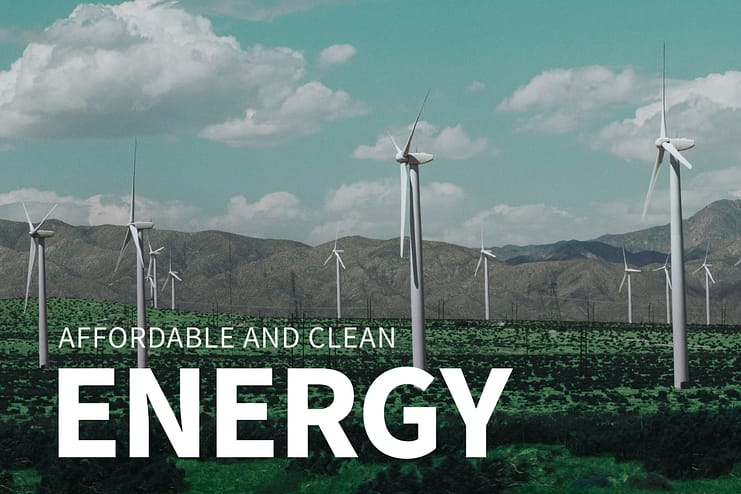
Introduction
Can E-Waste Be Incinerated? & How To Do It? In this blog post, we delve into the fascinating topic of e-waste disposal, exploring the potential of incineration as a sustainable solution.
Electronic waste, or e-waste, refers to discarded electronic devices like computers, smartphones, televisions, and appliances. As technology advances and consumer electronics become obsolete more quickly, the accumulation of e-waste has become a pressing environmental concern.
The environmental impact of e-waste arises from multiple factors. Firstly, electronic devices often contain hazardous substances like lead, mercury, cadmium, and flame retardants. When improperly disposed of, these toxic materials can seep into the soil and water, contaminating ecosystems and posing risks to human health and wildlife.
Secondly, when e-waste ends up in landfills, it takes up valuable space and can release harmful chemicals as the devices degrade over time. This contributes to air, soil, and water pollution, including the emission of greenhouse gases that contribute to climate change.
Table of Contents
The Growing Challenge of E-Waste: Exploring Incineration as a Solution
Proper disposal methods are crucial for mitigating the environmental impact of e-waste. Recycling is widely considered the preferred approach. Responsible recycling involves the safe extraction of valuable materials, the proper treatment and disposal of hazardous substances, and the refurbishment or reuse of functional components. By recycling e-waste, valuable resources can be conserved, and the environmental harm associated with extraction and production can be reduced.

However, some argue that incineration can be a solution for managing e-waste. Incineration involves burning e-waste at high temperatures, which can generate energy. Proponents argue that this approach can help address the growing e-waste problem while providing a source of energy. However, incineration also has drawbacks. It can release toxic pollutants into the air if not properly controlled, and the process may not effectively address the issue of hazardous substances contained in e-waste.
In general, while incineration may offer some benefits, it is important to prioritize recycling and responsible disposal methods as the primary means of managing e-waste. This approach minimizes environmental harm, promotes resource conservation, and encourages a circular economy by reusing valuable materials in the production of new devices.
Defining Electronic Waste: What It Is and Why It Matters
Electronic waste, commonly known as e-waste, refers to discarded electronic devices that have reached the end of their useful life or are no longer wanted by their owners. These devices can include computers, laptops, smartphones, tablets, televisions, printers, refrigerators, washing machines, and various other consumer electronics.

E-waste is characterized by its complex composition, which often includes a combination of metals, plastics, glass, and circuitry. These devices are designed to be durable and functional, but they can also contain hazardous materials that pose risks to the environment and human health if not properly managed.
Unveiling The Composition Of E-Waste: A Closer Look At Its Components

Heavy metals: Devices like CRT monitors and TVs contain leaded glass, while other components may contain lead, mercury, cadmium, and chromium. These heavy metals are toxic and can contaminate soil, water, and air if released into the environment.
Brominated flame retardants (BFRs): These chemicals are commonly used in circuit boards, cables, and plastic casings to reduce the risk of fire. However, BFRs are persistent organic pollutants that can accumulate in the environment and pose health risks.
PVC and other plastics: E-waste often contains plastics, including polyvinyl chloride (PVC). When incinerated or improperly disposed of, these plastics release harmful chemicals and dioxins into the environment.
The Environmental Impact of Traditional Disposal Methods

Landfilling: One of the common disposal methods for e-waste is landfilling, where devices are buried in the ground. This approach presents several challenges. E-waste takes up valuable landfill space and poses the risk of leaching hazardous materials into the soil and groundwater, contaminating the surrounding environment. Additionally, as e-waste decomposes, it can release greenhouse gases such as methane and carbon dioxide, contributing to climate change.
Recycling Challenges: While recycling is an essential solution for e-waste management, it comes with its own set of challenges. The complex composition of electronic devices makes recycling technically challenging and economically viable only for certain components and materials. Separating different materials and recovering valuable metals from e-waste requires specialized processes, making recycling costly and sometimes impractical.
Moreover, the improper recycling or dismantling of e-waste, especially in informal recycling operations, can lead to the release of hazardous substances and the unsafe handling of electronic components. This can result in environmental pollution and health risks for workers involved in the recycling process.
To overcome these challenges, it is crucial to invest in proper e-waste management systems that prioritize responsible recycling, safe disposal of hazardous materials, and the development of sustainable and efficient recycling technologies. This approach ensures the recovery of valuable resources, minimizes environmental harm, and protects the health and well-being of individuals involved in the e-waste lifecycle.
Incineration 101: How It Can Address the E-Waste Problem
Incineration is a waste management method that involves the combustion of materials at high temperatures. It is often considered as a potential solution for managing e-waste due to several reasons.

The basic principle of incineration is to burn e-waste in a controlled environment, such as specialized incinerators, to reduce its volume and generate energy. During the incineration process, the high temperatures break down organic materials, including plastics, into gases and ash. The gases can be captured and treated to minimize environmental pollution, while the ash can be further processed and disposed of safely.
Advantages of E-Waste Incineration: Energy Generation and Volume Reduction

Energy Generation: The combustion process in incineration generates heat, which can be harnessed to produce electricity or heat buildings. By converting e-waste into energy, incineration can help reduce the reliance on fossil fuels and contribute to sustainable energy production.
Volume Reduction: E-waste can be bulky and take up significant space in landfills. Incineration reduces the volume of e-waste, allowing for more efficient use of landfills or waste storage facilities.
Destruction of Hazardous Substances: The high temperatures in incinerators can potentially break down or neutralize hazardous substances present in e-waste, reducing their environmental impact. This can be particularly beneficial for certain types of e-waste, such as devices containing persistent organic pollutants or hazardous flame retardants.
Debunking Myths: Addressing Concerns About Incineration

Pollutant Emissions: Incineration can release pollutants into the air, including heavy metals, dioxins, and furans. These pollutants can have adverse effects on human health and the environment if not properly controlled. Advanced air pollution control technologies, such as scrubbers and filters, are necessary to minimize emissions.
Toxic Ash: The ash produced from incineration may contain residual hazardous materials from the e-waste. If not managed appropriately, this ash can pose risks when disposed of or if it enters waterways or the surrounding environment. Proper handling, treatment, and disposal of the ash are crucial to prevent environmental contamination.
Resource Loss: Incineration does not prioritize resource recovery. Valuable materials present in e-waste, such as precious metals and rare earth elements, are not effectively captured or recycled through incineration, leading to the loss of valuable resources.
To address these concerns, strict regulations, emission controls, and monitoring systems should be in place to ensure that incineration facilities operate within acceptable environmental and health standards. Additionally, incineration should be complemented by robust recycling programs that focus on resource recovery and responsible e-waste management to achieve a more sustainable and circular economy.
Incineration Techniques for E-Waste:
Different incineration techniques are employed for e-waste management, each with its own advantages and considerations. Here are some commonly used techniques:
- Mass Burn Incineration: A Tried and Tested Method
This technique involves burning e-waste as a whole, without prior separation or sorting. E-waste is directly incinerated in large-scale facilities, typically alongside other types of municipal solid waste. Mass burn incineration can handle a wide range of waste types but may not effectively address the specific challenges of e-waste, such as hazardous materials. - Modular Incineration: Tailoring Solutions for E-Waste
Modular incineration systems are smaller-scale facilities that are specifically designed for e-waste. They are capable of handling different types of e-waste, including large appliances and electronic devices. These facilities often incorporate sorting and pre-processing steps to optimize combustion efficiency and minimize the release of pollutants. - Co-Incineration: Maximizing Efficiency through Integrated Processes
Co-incineration involves combining e-waste with other combustible materials, such as biomass or industrial waste, in industrial or cement kilns. The high temperatures in these kilns help break down the e-waste while simultaneously providing energy for the industrial processes. Co-incineration can be an effective way to utilize e-waste as a fuel source, but careful monitoring and control are necessary to prevent the release of pollutants.
Preparing e-waste for incineration typically involves several steps:

- Sorting: E-waste is sorted to separate different types of devices and components. This allows for targeted treatment and efficient incineration.
- Shredding: After sorting, e-waste is often shredded into smaller pieces to increase the surface area for combustion, improve mixing, and enhance the overall incineration process.
- Removal of Hazardous Materials: Before incineration, hazardous materials, such as batteries, capacitors, and mercury-containing components, need to be safely removed from the e-waste. These hazardous materials require specialized handling and disposal methods to prevent environmental contamination and ensure worker safety.
Specialized facilities and equipment are necessary for safe and efficient e-waste incineration. These include:

- Incineration Plants: Dedicated incineration plants designed for e-waste management are equipped with combustion chambers, emission control systems, and monitoring devices to ensure efficient and controlled incineration processes.
- Pollution Control Systems: Advanced air pollution control systems, such as scrubbers, electrostatic precipitators, and fabric filters, are used to capture and remove pollutants generated during incineration. These systems help minimize the release of harmful gases and particles into the atmosphere.
- Hazardous Waste Treatment Facilities: To handle and dispose of hazardous materials removed from e-waste, specialized hazardous waste treatment facilities are required. These facilities ensure proper treatment and disposal of the hazardous components in an environmentally sound manner.
The design and operation of e-waste incineration facilities should adhere to strict environmental regulations and safety standards to mitigate the potential risks associated with incineration and ensure the protection of human health and the environment.
Clearing the Air: Understanding the Environmental Impact of E-Waste Incineration
E-waste incineration can have significant environmental impacts, particularly if not properly controlled and monitored. It is essential to understand and address these impacts to ensure sustainable and responsible e-waste management.
Monitoring and Mitigation: Controlling Emissions and Reducing Pollution
To mitigate the environmental impact of e-waste incineration, monitoring and control systems play a crucial role. Here are some key considerations:
- Emission Monitoring: Continuous monitoring of emissions is necessary to ensure compliance with environmental regulations. Monitoring systems measure various pollutants, such as heavy metals, dioxins, furans, and volatile organic compounds (VOCs). Real-time monitoring enables prompt actions to address any deviations from acceptable emission levels.
- Pollution Control Technologies: Advanced air pollution control technologies, including scrubbers, electrostatic precipitators, and fabric filters, are employed to capture and remove pollutants from the incineration process. These systems help reduce the release of harmful gases and particles into the atmosphere, minimizing environmental pollution.
- Waste Gas Treatment: Specialized waste gas treatment processes, such as activated carbon adsorption or catalytic conversion, may be used to further treat and remove pollutants from the exhaust gases before they are released into the environment.
Health Risks and Precautions: Ensuring Safety for Workers and Communities

E-waste incineration facilities should prioritize the safety and well-being of workers and nearby communities. Here are some key considerations:
- Occupational Health and Safety: Workers involved in e-waste incineration must be trained in proper handling, personal protective equipment (PPE) usage, and safety procedures. Adequate ventilation and monitoring systems should be in place to ensure a safe working environment.
- Community Awareness and Engagement: Transparency and community engagement are vital to address concerns related to e-waste incineration. Informing and involving local communities helps foster trust, allows for feedback and concerns to be addressed, and ensures that the facility operates in a manner that prioritizes public health and safety.
- Health Impact Assessments: Conducting health impact assessments can help evaluate the potential risks associated with e-waste incineration and guide the implementation of appropriate safeguards and mitigation measures. These assessments should consider the potential exposure pathways and impacts on both workers and nearby communities.
- Regulatory Compliance: Strict adherence to environmental and health regulations is crucial to protect both the environment and human health. Governments and regulatory bodies should establish and enforce robust regulations to ensure that e-waste incineration facilities meet stringent standards.
By implementing effective monitoring systems, employing pollution control technologies, prioritizing worker safety, engaging with communities, and complying with regulations, the environmental and health risks associated with e-waste incineration can be minimized, creating a safer and more sustainable approach to e-waste management.
Regulations and Responsibility: The Role of Policies in E-Waste Management

Regulations and policies play a crucial role in promoting responsible e-waste incineration. They provide a framework for ensuring proper management, minimizing environmental impacts, protecting human health, and promoting accountability. Here are key considerations:
- Legal Framework: Governments should establish comprehensive legislation and regulations specifically addressing e-waste management, including incineration. These regulations should cover aspects such as the collection, transportation, storage, treatment, and disposal of e-waste. They should also specify emission limits, waste gas treatment requirements, and worker safety standards.
- Extended Producer Responsibility (EPR): EPR policies hold manufacturers responsible for the entire lifecycle of their products, including their safe disposal. EPR systems can incentivize manufacturers to design products that are easier to recycle or incinerate, and provide financial support for e-waste management initiatives.
- International Agreements and Standards: International agreements, such as the Basel Convention, aim to regulate the transboundary movement of hazardous waste, including e-waste. Additionally, organizations like the International Electrotechnical Commission (IEC) and the International Organization for Standardization (ISO) develop standards and guidelines for responsible e-waste management.
Best Practices and Guidelines: Safeguarding Responsible Incineration
To ensure responsible e-waste incineration, best practices and guidelines should be established. These practices can include:
- Pre-Incineration Preparation: Prior to incineration, e-waste should undergo proper sorting, shredding, and removal of hazardous materials. This ensures efficient combustion and reduces the release of pollutants.
- Proper Facility Design: E-waste incineration facilities should be designed to meet environmental and safety standards. This includes adequate pollution control systems, emission monitoring equipment, and worker safety measures.
- Responsible Ash Management: The safe handling, treatment, and disposal of ash generated from e-waste incineration should be ensured. Ash should be managed as hazardous waste, and appropriate techniques for its treatment and disposal should be implemented.
Auditing and Certification: Ensuring Compliance and Accountability

Regular auditing and certification can help ensure compliance with regulations and promote accountability. Key aspects include:
- Facility Auditing: Independent audits should be conducted to assess the compliance of e-waste incineration facilities with environmental and health regulations. These audits evaluate emissions, waste management practices, worker safety measures, and adherence to best practices.
- Certification Systems: Certification programs, such as ISO certifications, can provide assurance that e-waste incineration facilities meet internationally recognized standards for environmental management, quality management, and worker safety.
- Chain of Custody Verification: Establishing a reliable chain of custody verification ensures that e-waste is handled properly throughout the entire incineration process, from collection to disposal. This helps prevent illegal dumping, uncontrolled incineration, or improper treatment of e-waste.
By implementing robust regulations, following best practices and guidelines, and conducting regular auditing and certification, responsible e-waste incineration can be ensured. This promotes transparency, accountability, and a safer approach to e-waste management.
Conclusion:
As the volume of electronic waste (e-waste) continues to grow, it is essential to embrace sustainable and responsible methods of e-waste management. While recycling is widely recognized as the preferred approach, incineration can play a role in addressing e-waste challenges when implemented responsibly. Responsible incineration of e-waste involves careful monitoring and mitigation of emissions, proper preparation of e-waste prior to incineration, and adherence to environmental and health regulations. By controlling emissions, utilizing advanced pollution control technologies, and ensuring worker safety, the environmental impact of e-waste incineration can be minimized. However, it is important to address concerns associated with incineration, such as the release of pollutants and the handling of toxic ash. Strict regulations, continuous monitoring, and the use of specialized facilities and equipment are necessary to mitigate these concerns effectively.
To ensure responsible incineration, a comprehensive approach is required. This includes the establishment of robust regulations and policies, the implementation of best practices and guidelines, and the auditing and certification of e-waste incineration facilities. Extended Producer Responsibility (EPR) policies can also incentivize manufacturers to design products that are easier to incinerate and support responsible e-waste management.
Ultimately, sustainable e-waste management requires a combination of recycling, responsible incineration, and resource recovery. By embracing responsible incineration alongside recycling initiatives, we can effectively manage e-waste, reduce environmental impacts, protect human health, and move towards a more sustainable and circular economy.

1 thought on “Can E-Waste Be Incinerated? & How To do It?”